Ultimate Guide to 2 Inch PVC Check Valves: Ensuring Optimal Flow Control and System Efficiency
Table of Contents
- Understanding 2 Inch PVC Check Valves: Key Specifications and Standards
- Impact of Flow Rates on System Efficiency: Analyzing 2 Inch PVC Check Valves
- Evaluating Material Durability: Insights into PVC's Performance Metrics
- Installation Tips for 2 Inch PVC Check Valves: Ensuring Proper Functionality
- Common Challenges and Solutions: Maximizing Flow Control with Check Valves
- Cost Analysis: Evaluating ROI on 2 Inch PVC Check Valve Installations
- Understanding the Importance and Benefits of PVC Check Valve Spring Type in Fluid Control Systems
- FAQS
- Conclusion
- Related Posts
When it comes to managing fluids, making sure you've got the right valves installed is pretty much essential for keeping systems running smoothly and ensuring good flow control. Out of all the options out there, those 2 Inch PVC Check Valves tend to stand out—they're known for being reliable and super versatile. Recently, industry reports suggest the global market for PVC valves is expected to grow quite a bit, thanks to rising demand in areas like agriculture, construction, and water treatment. As a supplier with over 10 years of experience in exporting plastic pipes, fittings, and valves, Ningbo Pntek Technology Co., Ltd. truly gets how important it is to pick the right components for fluid systems. In this guide, I’ll walk you through the key role that 2 Inch PVC Check Valves play in keeping fluid flow efficient, and give some tips on how to get the most out of them for different uses.

Understanding 2 Inch PVC Check Valves: Key Specifications and Standards
When you're trying to optimize flow control across different systems, it’s really important to get a good handle on the key specs and standards for 2-inch PVC check valves. Basically, these valves are there to stop backflow — so fluids only move one way, smoothly and efficiently. I’ve seen reports that suggest using PVC check valves can actually help make your system last longer and cut down on maintenance costs by as much as 30%. No wonder they're so popular in plumbing and industrial setups!
One thing you definitely want to keep in mind is the pressure rating of the valve. Most 2-inch PVC check valves are rated for around 150 psi at room temperature, which lines up with ASTM D1784 standards. That means they can handle pretty hefty pressure without breaking a sweat. Also, don’t forget about flow rates — these valves usually support anywhere from 20 to 150 GPM, depending on what your system needs. Picking the right size based on these specs can really make a difference in how well everything runs.
**A couple of tips:** Make sure to check flow charts and manufacturer info to pick the perfect check valve for your setup. Regular maintenance is key, too — it helps prevent clogs and keeps the valve working smoothly for longer. And don’t forget to think about environmental stuff, like temperature and chemicals — these can really impact how durable the material is and how well the valve performs overall.
Flow Rate Comparison of 2 Inch PVC Check Valves
This chart displays the flow rates of various 2-inch PVC check valves, highlighting the differences in efficiency and performance that can impact overall system effectiveness.
Impact of Flow Rates on System Efficiency: Analyzing 2 Inch PVC Check Valves
When you’re dealing with fluid dynamics, one thing that often gets overlooked but really matters is the flow rate—especially when you’re using 2-inch PVC check valves. These little guys are pretty vital because they stop backflow, which helps keep the flow going in the right direction and makes the whole system run smoother. I’ve come across some recent studies that show even tiny changes in flow rates can really shake up how well these hydraulic systems perform. For example, it turns out that systems with properly matched flow rates can be up to 30% more efficient than those running on poor flow conditions. That’s a pretty big difference!
And talking about efficiency, I was also reading some recent experiments on evaporative cooling setups. They pointed out that understanding and controlling flow isn’t just technical mumbo jumbo—it actually makes a significant impact on how well the system works. Proper flow control, including good check valves, can really help prevent cavitation in hydraulic pumps—a notorious problem that can damage the pump and cut its lifespan short. When you keep the flow steady and disruptions at bay, not only does the equipment last longer, but you also save energy in the long run. It’s a perfect example of how managing flow rates effectively is at the heart of modern engineering and system efficiency.
Evaluating Material Durability: Insights into PVC's Performance Metrics
 When you're looking at how PVC check valves perform, one of the biggest things you can't overlook is how durable the material is. PVC is pretty awesome when it comes to resisting chemical corrosion, which is why it’s used in all sorts of applications—think wastewater systems or agricultural irrigation. Unlike metal valves that might rust or break down after a while, PVC keeps its shape and strength, even in tough conditions. That means these valves last longer and you don’t have to spend as much on maintenance or replacements all the time.
When you're looking at how PVC check valves perform, one of the biggest things you can't overlook is how durable the material is. PVC is pretty awesome when it comes to resisting chemical corrosion, which is why it’s used in all sorts of applications—think wastewater systems or agricultural irrigation. Unlike metal valves that might rust or break down after a while, PVC keeps its shape and strength, even in tough conditions. That means these valves last longer and you don’t have to spend as much on maintenance or replacements all the time.
Plus, PVC isn’t just about resisting corrosion. It’s also quite strong in terms of tensile strength and pretty flexible too, which is important when dealing with high-pressure situations. Well-designed PVC check valves can handle pressure swings and changes in flow without losing their performance. Understanding these features can really help you pick the right valve and make sure your system runs smoothly for years to come. Bottom line: knowing what PVC can do helps you make smarter choices and keeps your setups reliable and long-lasting over time.
Installation Tips for 2 Inch PVC Check Valves: Ensuring Proper Functionality
When you're trying to get the most out of your plumbing system, making sure your 2-inch PVC check valves are installed just right is really important. These little guys are key for controlling water flow, stopping backflow, and keeping the pressure just right in a bunch of different setups. To keep everything running smoothly, there are a few tips you might wanna keep in mind.
First off, always double-check the manufacturer's instructions for how the valve should be positioned. Most valves come with an arrow indicating the direction of flow — don’t ignore it! And before you start installing, make sure your pipes are nice and clean — no debris or gunk — because that can cause hiccups down the road.
Another thing is to make sure you cement those joints properly, following the guidelines for PVC connections. It might seem simple, but that really beefs up the system’s strength and helps prevent leaks. Once it’s all set up, don’t forget to give everything a quick inspection now and then — especially for setups like showers, where flow and temperature matter a lot. Follow these tips, and your 2-inch PVC check valves should give you reliable service for years to come — no worries!
Ultimate Guide to 2 Inch PVC Check Valves: Ensuring Optimal Flow Control and System Efficiency
| Feature | Description | Benefits |
|---|---|---|
| Material | Durable PVC construction | Corrosion-resistant and long-lasting |
| Size | 2 inches | Fits standard plumbing applications |
| Flow Direction | Allows flow in one direction only | Prevents backflow, ensuring system efficiency |
| Installation Type | Socket or threaded connections | Compatible with various plumbing systems |
| Pressure Rating | Up to 150 psi | Suitable for most residential and commercial applications |
| Maintenance | Minimal; occasional inspections recommended | Saves time and costs on repairs |
| Applications | Water supply, irrigation, pool systems | Versatile solutions for various needs |
Common Challenges and Solutions: Maximizing Flow Control with Check Valves
Check valves are pretty essential when it comes to keeping water flowing smoothly in different hydraulic systems, especially in water distribution setups. One tricky part about these valves is making sure they stop backflow without blocking the flow when everything’s functioning right. The challenge gets even more complicated when you think about things like pressure swings and flow rates, which can really mess with performance. Solving these issues often means coming up with creative modeling methods that can handle all those quick changes happening in water systems.
Lately, researchers have been coming up with new ways to model control valves, highlighting just how important check valves are for keeping things running efficiently. By running different scenarios, engineers can figure out the best setups that cut down on energy waste and help prevent pollutants from getting through. Plus, with the push for energy-efficient solutions — especially off-road hydraulics — it’s becoming clear that we need to ditch some of those flow restrictions in control systems. Doing so not only makes operations smoother but also supports sustainability efforts, which is why advancing check valve design is more important than ever.
Cost Analysis: Evaluating ROI on 2 Inch PVC Check Valve Installations
 When you're thinking about investing in 2-inch PVC check valves, it's pretty important to consider the return on that investment, especially if you’re running a water management system. I mean, according to a report from the American Society of Civil Engineers, if flow isn’t properly regulated, it can really hurt your bottom line—up to 30% of your annual operational costs could be gone just because of inefficiencies. But here’s the good news: by using well-functioning check valves, you can get things flowing smoothly and cut down on these extra costs pretty significantly. Honestly, the money saved over time on maintenance and avoiding downtime due to flow problems usually far exceeds what you pay upfront for quality PVC check valves.
When you're thinking about investing in 2-inch PVC check valves, it's pretty important to consider the return on that investment, especially if you’re running a water management system. I mean, according to a report from the American Society of Civil Engineers, if flow isn’t properly regulated, it can really hurt your bottom line—up to 30% of your annual operational costs could be gone just because of inefficiencies. But here’s the good news: by using well-functioning check valves, you can get things flowing smoothly and cut down on these extra costs pretty significantly. Honestly, the money saved over time on maintenance and avoiding downtime due to flow problems usually far exceeds what you pay upfront for quality PVC check valves.
And it’s not just about saving costs; these valves can actually make your entire system last longer. There’s a study in the Journal of Fluid Mechanics that shows good-quality check valves can reduce wear and tear on pumps and pipes by at least 25%. That means fewer repairs, less frequent replacements, and a smoother operation overall. So, investing in 2-inch PVC check valves isn’t just about better flow control—it’s a smart financial move for anyone who wants their system to run efficiently and save some money in the long run.
Understanding the Importance and Benefits of PVC Check Valve Spring Type in Fluid Control Systems
Understanding the importance of PVC check valve spring type in fluid control systems is essential for ensuring operational efficiency and reliability. These check valves are designed to allow fluid to flow in one direction while preventing reverse flow, which is crucial in various applications such as water treatment, industrial processes, and plumbing systems. The spring mechanism enhances the valve's performance, providing a tighter seal and quicker response times compared to standard gravity check valves. This is particularly beneficial in systems requiring a stable and consistent flow, contributing to improved control over fluid dynamics.
When selecting a PVC check valve, the component materials play a significant role in durability and functionality. Our product features a body constructed from UPVC or CPVC, which offers excellent resistance to corrosion and chemical damage. The use of EPDM or FPM (NBR) for the union O-ring ensures a robust seal that can withstand fluctuating pressures and temperatures. Additionally, the end connector, union nut, and male adaptor union are also made from UPVC or CPVC, further enhancing the valve's overall reliability and lifespan. With sizes available including 1-1/2" and 2", this range of valves is tailored to meet diverse fluid control needs while maintaining optimal performance in any environment.
FAQS
: PVC check valves are highly durable due to their resistance to chemical corrosion, impressive tensile strength, and flexibility, making them suitable for various applications without succumbing to rust or degradation.
The durability of PVC check valves extends their lifespan and reduces the maintenance costs associated with frequent replacements compared to metal valves.
It's essential to check the manufacturer's specifications for orientation, ensure that pipes are clean and free from debris, and securely cement the joints to prevent leaks.
Proper orientation is crucial because most valves have an arrow indicating the flow direction, and incorrect installation can lead to ineffective flow control and potential backflow issues.
A primary challenge is ensuring that check valves prevent backflow while allowing efficient flow passage, which can be affected by pressure variations and flow rates.
Innovative modeling techniques can simulate various operational scenarios to identify optimal valve configurations that minimize energy loss and enhance system efficiency in water distribution networks.
Regular inspection ensures that the valves are functioning correctly and efficiently, which is particularly important in systems where flow and temperature control are critical, such as shower setups.
Energy efficiency is vital in check valve design as it helps streamline operations, removes flow throttling, and contributes to sustainability goals, especially in applications like off-road hydraulics.
Users should regularly inspect the valves and ensure the joints remain securely cemented to maintain the integrity of the system and prevent leaks.
Conclusion
Welcome to our ultimate guide on 2-inch PVC check valves! If you're trying to get a handle on how these little guys work and why they matter, you’ve come to the right place. We're gonna dive into the key specs and standards you need to know—trust me, understanding these makes all the difference. Plus, we’ll look at how different flow rates can affect your system’s performance because, honestly, it’s all about finding that sweet spot.
PVC is pretty impressively tough and reliable, and we’ll share some insights on its durability and what kind of performance you can expect. That way, you can make smarter choices without all the guesswork. We also toss in some practical tips for installing your check valves right—because, let’s be honest, no one wants to deal with leaks or flow issues down the road. And if you’ve hit any snags, don’t worry—we’ve got solutions to help keep everything running smoothly.
Oh, and before you get too carried away, we’ve thrown in a quick cost analysis, so you can see how these valves stack up in terms of long-term value and return on investment. At Ningbo Pntek, we’ve been in the game for over ten years, providing high-quality plastic pipes, fittings, and valves. Our goal? To help you keep your flow system efficient and hassle-free.
Related Posts
-

5 Tips for Choosing the Right 2 PVC Valves for Your Project
-
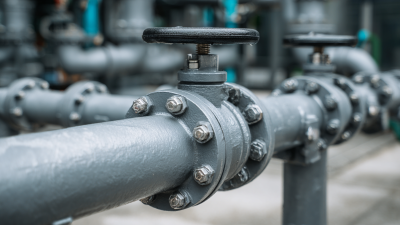
7 Essential Tips for Choosing the Best 6 PVC Ball Valves for Your Projects
-
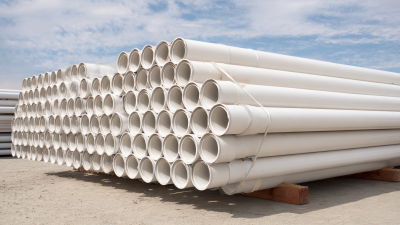
How to Choose the Right U Pvc Pipe for Your Project
-
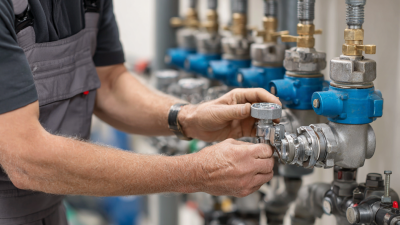
How to Choose the Right 1 Inch PVC Valves for Your Plumbing Needs
-
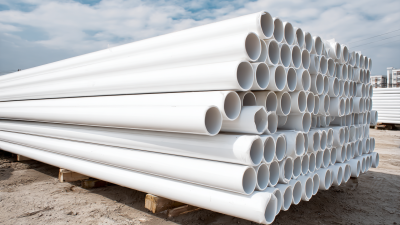
7 Essential Tips for Sourcing Upvc Pipes: What Every Global Buyer Needs to Know
-

Comprehensive Guide to Choosing the Best Upvc Pipe Fittings for Your Project
Blog Tags:

Lila
Application

Underground pipeline
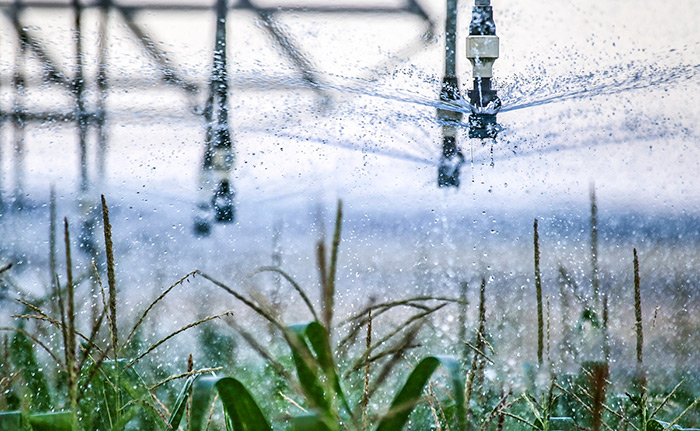
Irrigation System

Water Supply System


